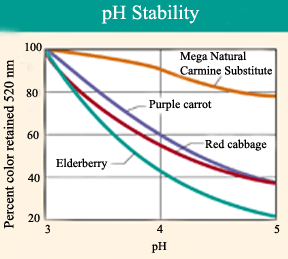
In an effort to provide a natural, label-friendly alternative that withstands high levels of pH and ascorbic acid, as well as high processing temperatures, Canandaigua Concentrate, Madera, Ca., has introduced MegaNatural™ Carmine Substitute. This grape-based colorant has exhibited excellent stability when compared to other fruit-based colors, such as Italian grape extract, purple carrot, red cabbage and elderberry, report company officials.
The new colorant will be of particular interest to fruit juice, children's juice and energy drink manufacturers, whose products contain high levels of vitamin C and calcium. Other high- and low-acid applications include pink grapefruit beverages, shelf-stable lemonade, clear beverages, guava, nectars, yogurts and other cultured milk products.
“This product is the result of three years of research carried out in Canandaigua Concentrate's R & D Center. Under the leadership of Anil J. Shrikhande, Ph. D., we have made a breakthrough with a product that is stable, label-friendly and also withstands fluorescent lighting,” says Rodger Williams, director of new business development for Canandaigua Concentrate. He also notes insect-derived colorants have been linked to allergic reactions.
Williams stresses that the substitute will keep its true color. “In the presence of a hostile ascorbic acid environment, the carmine- and cochineal-derived red colors fade. This is where their performance has been affected and our product has found a niche.”
See www.cwine.com for more information.
Canandaigua Concentrate.
Write in 200